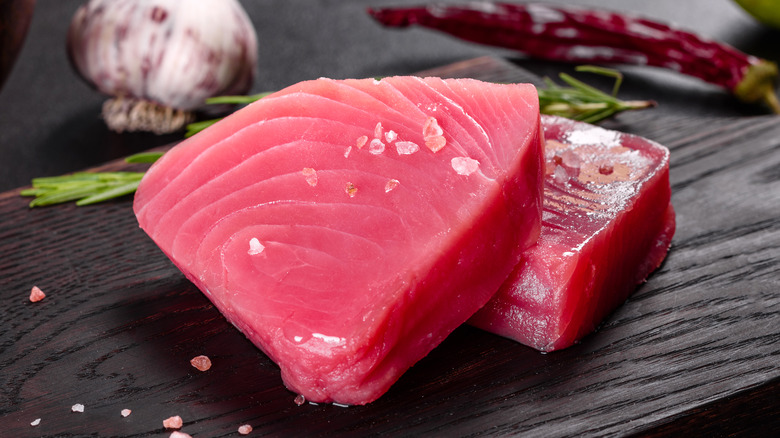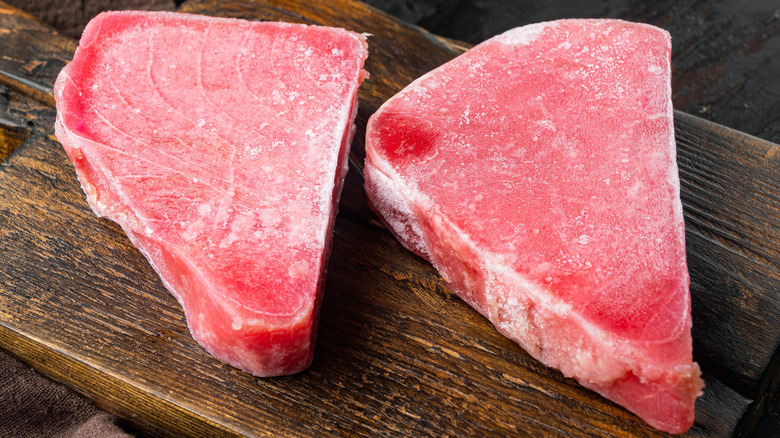How Thick Should Tuna Steaks Be Cut?
The tuna is an absolute beast of a fish. According to NOAA Fisheries, the Atlantic bluefin tuna is the largest of the species, growing up to 13 feet long and weighing upwards of 2,000 pounds. For comparison, that's between 400 to 600 pounds heavier than your standard 1,400 to 1,600-pound dairy cow, per Pet Keen. That's quite a lot of fish to go around. Tuna is one of the most fished in all the world, owing to its popularity and rate of consumption. Across the entire species, there is high demand for tuna meat needed for canning or sushi (via Atuna).
Far more than just a canned item, one of the most common cuts of tuna — the one you are most likely going to see at the fish counter of your local butcher or supermarket — is the steak. Tuna steak comes from the loin of the fish along its back. Loaded with omega-3 fatty acids, exceptional protein, and plenty of vitamins and minerals, tuna steak is an excellent and adaptable meal on its own, while also being a terrific alternative to classic beef steaks, per Steak Society. Tuna meat, however, can be tricky to cook for beginners. As tuna is not nearly as fatty as other popular fish, like salmon, the meat can easily be overcooked if certain steps aren't taken, per MasterClass. The important first step is that you need to take extra care to ensure the proper thickness of your tuna steaks.
Thickness can prevent dryness
The last thing you want is to overdo your tuna steak. An overdone tuna steak is dry, flaky, and utterly unappetizing. Tuna, like a great many fish, benefits from the fact that it can be consumed raw or lightly cooked without any serious health risks when eaten in moderation, per Healthline. This is an important fact to remember when cooking tuna steak. The result you are looking for is a steak that is cooked on both sides, but still raw and juicy in the middle.
Achieving this has everything to do with the thickness of your steak. If you find yourself with an uncut segment of tuna loin, the numbers to go by, according to Steak Society, should be a minimum of one inch thick. You can extend it to an inch and a half or even two inches. If you're buying from a market, you can ask the fishmonger to cut your steaks to size. Keeping the steaks thick like this allows them to remain juicy during the cooking process because the heat will take longer to penetrate the succulent center, per MasterClass. Timing the sear on your tuna is also important, but the added thickness allows for a touch more grace. Over high heat, either on the grill or in a skillet, briefly sear the tuna on both sides. Like on a beef steak, the sear will impart an extra flavor while locking the moisture into the center.

